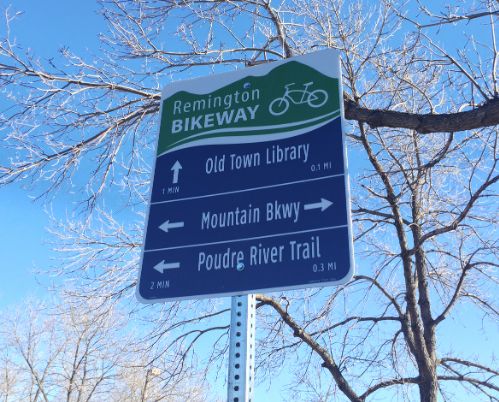Choosing a Safe Route to School#
Safe Routes to School Web Map#
Safe Routes to School has worked collaboratively with the City of Fort Collins' GIS department to produce this interactive web map. The Safe Routes to School Map shows layers to help children and their parents to navigate the City of Fort Collins' transit, bicycle, and trail networks. This is a work in progress so any input about usability is appreciated. Please email Brian Kurotsuchi at bkurotsuchi@fcgov.com with your feedback.
General Tips#
- Young children should generally not travel alone. It’s always safer -- and more fun! -- to walk or bike with friends or family. Groups are more visible to motorists, and if anything were to happen on the way to school, traveling with others makes it possible to have assistance right there to help.
- Groups of kids who walk to school are known as “walking school buses,” and groups of kids who bike are called “bike trains.” These groups, particularly younger students, are often accompanied by parent volunteers or trained community volunteers.
- Find a route that eliminates or minimizes travel along or across streets with higher speeds and higher traffic volumes.
- Wear bright-colored clothing and/or carry a bright-colored backpack to increase visibility.
- If there is a possibility of having to walk or bike during twilight or after dark, wear reflective clothing and carry a flashlight or use a white headlight and red taillight/reflector on a bike.
Walking#
- Choose a route that has safer street crossings, such as crossing-guard locations and signalized intersections and midblock crossings where cross-traffic must stop and wait for you to cross.
- At signalized crossings, make sure that all motorists see you and are stopped before proceeding into the street, even when you have the walk signal. Make eye contact with motorists to ensure they know you are there.
- Before crossing any street, look left, right, left again, and behind you to ensure motorists have stopped and are yielding to you.
- It is best to cross only at the start of the crossing-signal activation (when the white walking figure or green bike is visible). It is best to wait until the next signal cycle if you see a flashing red hand or a red countdown.
- If there is a segment of sidewalk that is missing or of inferior quality (for example, too narrow or very close to traffic on a high-speed, high-traffic street), consider using a different route or crossing to the other side of the street at a safe location.
Biking#
- Ride on the right (with traffic) and stop at all stop signs and red lights.
- Use hand signals to show motorists your intended movements on the roadway.
- Follow all other rules of the road. This page also provides tips for motorists to drive safely around bicyclists and pedestrians.
- If riding on the sidewalk (which is legal except in designated dismount zones), pay special attention when crossing driveways and streets. Motorists backing out of driveways may not easily see bicyclists. And motorists on roadways may not be expecting to see a bicyclist coming off a sidewalk into the street. Never roll off a sidewalk into a street without checking carefully for traffic. Younger children are safest if they dismount and walk their bikes at street crosswalks.
- Always wear a properly fitted helmet.
- Ensure that your bicycle is safe to ride by checking that your tires are in good shape and properly inflated; your drivetrain and gears are clean, lubricated, and well-functioning; your brakes work effectively to stop your bike, and no vital parts on your bike are loose or broken.
Taking the Bus#
- Be sure to arrive a few minutes early for either the PSD school bus or Transfort bus. Buses cannot wait for tardy passengers, including schoolchildren.
- Students must be out of the roadway, either on the sidewalk or on the shoulder of the road, as the bus approaches the stop.
- Remember when riding Transfort to have your student I.D. card (or Transfort Youth Bus Pass) ready to show the driver when you get on the bus.
- On Transfort, remember to let everyone off the bus first before you start to board.
- No eating on the Transfort buses. Drinks must have a lid.
- Be cautious when crossing streets to get to and from bus stops. Use the nearest safe crossing rather than running across a busy street to get to your stop.
- View more information about PSD buses
- View more general information about Transfort, including routes and schedules or get specific tips on how to use the Transfort system.
